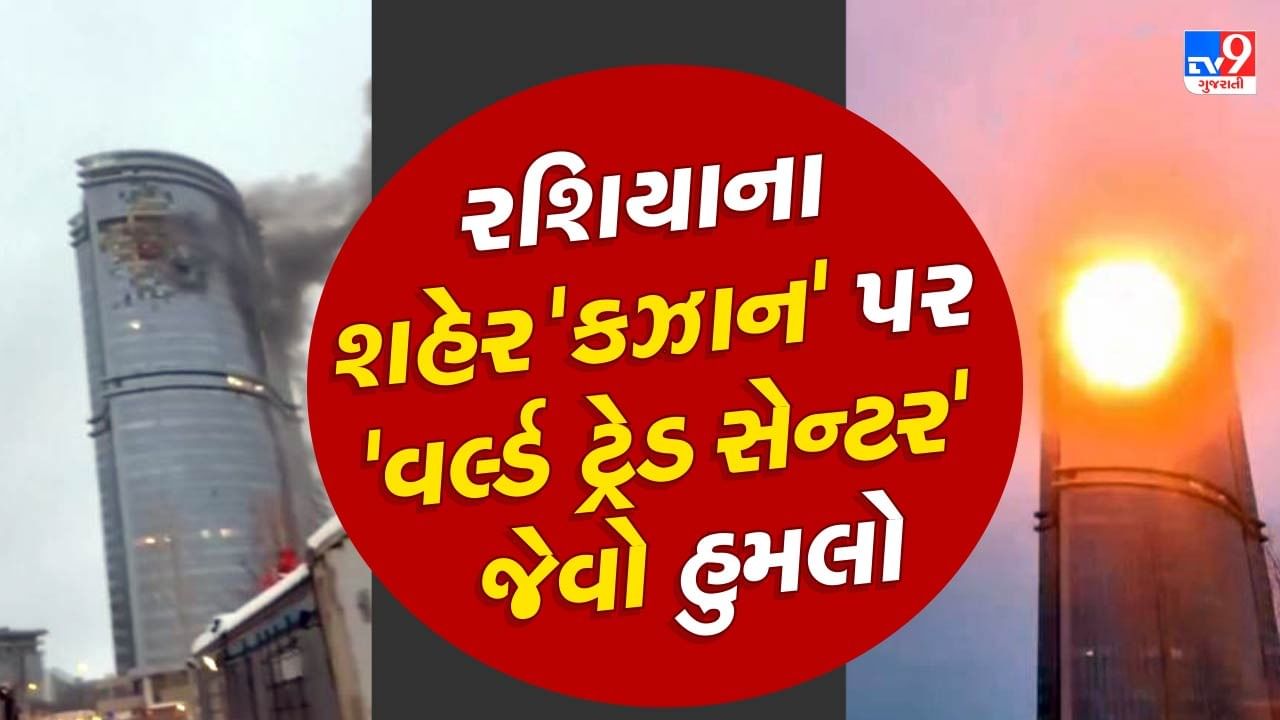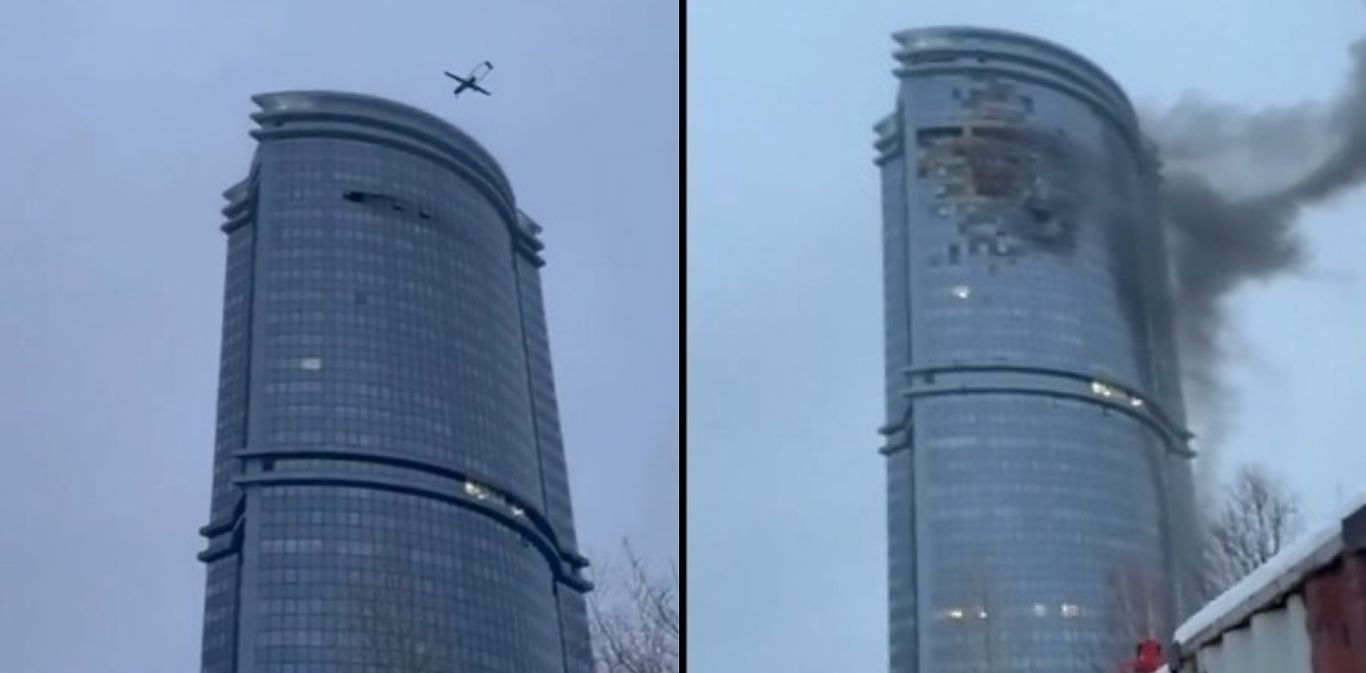Kazan drone attack: The recent incident in Kazan, involving the use of drones, has raised significant concerns regarding security, geopolitical stability, and technological advancements. This event necessitates a thorough examination of its circumstances, consequences, and broader implications, exploring the potential actors involved, the motivations behind the attack, and the responses from various stakeholders. A comprehensive understanding of this incident is crucial for assessing its impact on regional dynamics and informing future security measures.
The recent drone attack on Kazan highlights the evolving nature of modern warfare, showcasing the vulnerability of even seemingly secure locations. It’s a stark contrast to the festive cheer associated with the norad santa tracker phone number , a tradition that emphasizes global connectivity and peace. However, the Kazan incident underscores the need for enhanced security measures against such threats, reminding us that even during times of celebration, vigilance remains crucial.
This analysis will delve into the specifics of the Kazan drone attack, including the timeline of events, the extent of damage, and the potential actors responsible. We will explore the geopolitical context, examining regional tensions and the motivations behind the attack. Furthermore, we will analyze the technological aspects of the drones used, the security implications for civilian infrastructure, and the media’s role in shaping public perception.
Ultimately, this exploration aims to provide a balanced and informed perspective on this significant event.
The Kazan Drone Attack: An Analysis
The reported drone attack on Kazan, Russia, sparked immediate international attention, raising questions about the perpetrators, motivations, and broader geopolitical implications. This analysis examines the event, its aftermath, and its significance within the current global landscape, focusing on the technological, security, and media aspects.
Event Overview: The Kazan Drone Attack
Reports emerged of a drone attack targeting Kazan, a significant city in Russia. While details remain scarce and official statements are limited, initial reports suggest multiple drones were involved, potentially targeting critical infrastructure or government buildings. The exact number of drones, their origin, and the extent of damage are still under investigation. Casualty figures, if any, are yet to be officially confirmed.
A timeline of events, pieced together from various news sources, indicates initial reports surfaced on [Insert Date], with subsequent reports clarifying the nature and scale of the incident. The aftermath saw increased security measures in the city, including heightened surveillance and potential restrictions on drone usage.
| Date | Time | Location | Reported Targets |
|---|---|---|---|
| [Insert Date] | [Insert Time] | Kazan, Russia | [Insert Reported Targets – e.g., Government buildings, infrastructure] |
Attribution and Responsibility

Determining responsibility for the attack presents a complex challenge. Several potential actors could be considered, ranging from domestic dissident groups to foreign state actors with grievances against Russia. The methods employed, including the type of drones used and the tactics implemented, provide clues that could help investigators narrow down the list of potential perpetrators. The investigation will need to consider the drones’ flight paths, payload capacity, and any identifying markers.
Comparison with similar drone attacks in other regions, such as those targeting military bases or critical infrastructure in other countries, could offer valuable insights into the potential motives and capabilities of the perpetrators. Any claims or evidence presented by various parties regarding responsibility will need careful scrutiny and verification.
Geopolitical Context
The geopolitical implications of the Kazan drone attack are significant, particularly considering the ongoing tensions in the region and the broader international context. The attack could escalate existing conflicts or create new ones, depending on how the incident is handled and the response from involved parties.
- Ongoing tensions between Russia and Ukraine
- Russia’s relationship with neighboring countries
- International sanctions against Russia
- The global proliferation of drone technology
Responses and Aftermath
Official responses from local, national, and international authorities have varied. Local authorities likely implemented immediate security measures, while the national response might involve investigations and potential retaliatory actions. International responses are likely to depend on the perceived perpetrators and the broader geopolitical implications. Public reaction has ranged from concern and fear to speculation and outrage, depending on the source of information and individual perspectives.
The long-term consequences could include increased security measures, heightened tensions, and potential retaliatory actions. Investigations into the incident are likely to be thorough, involving multiple agencies and international cooperation.
Technological Aspects

The Kazan drone attack highlights advancements in drone technology, particularly in terms of range, payload capacity, and navigation systems. The drones involved likely possessed sophisticated capabilities to evade detection and reach their targets effectively. This incident underscores the increasing accessibility and affordability of advanced drone technology.
A hypothetical drone used in such an attack might be a small, multi-rotor UAV with advanced GPS capabilities, obstacle avoidance sensors, and a capacity for carrying a small explosive payload or other disruptive devices. Its design would prioritize stealth and maneuverability.
Security Implications, Kazan drone attack
The attack exposed vulnerabilities in Kazan’s security infrastructure, highlighting the need for improved drone detection and defense systems. This includes enhancing surveillance capabilities, implementing stricter regulations on drone usage, and developing advanced counter-drone technologies. The incident underscores the potential for civilian infrastructure to be targeted by drones, necessitating the strengthening of security protocols and emergency response plans.
The recent drone attack on Kazan highlights the increasing vulnerability of civilian areas to unmanned aerial vehicles. This incident underscores the need for robust counter-drone measures, a point further emphasized by the unfortunate orlando drone show malfunction , which showcased potential technical failures even in controlled environments. Such incidents, whether malicious or accidental, demand improved safety protocols and technological advancements to mitigate future risks to Kazan and other cities globally.
Improvements could involve deploying counter-drone systems, enhancing physical security measures, and implementing stricter regulations on drone operation in sensitive areas. Further investment in research and development of advanced drone detection and defense technologies is crucial.
Media Coverage and Public Perception
Media coverage of the Kazan drone attack varied significantly across different outlets, reflecting diverse perspectives and potential biases. Some outlets emphasized the potential threat posed by drone technology, while others focused on the geopolitical implications of the incident. The impact of media coverage on public perception is considerable, shaping public understanding and influencing opinions on the event’s significance and potential consequences.
Analyzing different media portrayals reveals potential biases in framing the narrative, influencing public opinion through selective reporting and emphasis on certain aspects of the event over others. The way the incident is presented by media outlets can significantly impact the public’s understanding and response.
The Kazan drone attack serves as a stark reminder of the evolving nature of conflict and the vulnerabilities of civilian infrastructure to emerging technologies. The incident highlights the need for enhanced security measures, international cooperation, and a deeper understanding of the geopolitical dynamics at play. Further investigation and analysis are crucial to fully comprehend the implications of this event and to develop effective strategies for mitigating future risks.
The long-term consequences remain uncertain, demanding continued vigilance and proactive measures to safeguard against similar incidents.
The recent drone attack on Kazan highlights the evolving threat of unmanned aerial vehicles. This incident underscores the need for robust counter-drone measures, a stark contrast to the seemingly carefree spectacle of a drone show, such as the one showcased at the orlando drone show. While the Orlando event demonstrates the potential for impressive drone displays, the Kazan attack serves as a sobering reminder of their potential for malicious use.
The contrast between these two applications is striking.
Detailed FAQs: Kazan Drone Attack
What type of drones were reportedly used in the Kazan attack?
Specific drone models involved haven’t been officially confirmed. Investigations are ongoing.
Were there any arrests made in connection with the attack?
Information regarding arrests is not yet publicly available. Official investigations are underway.
What is the estimated cost of the damage caused by the attack?
Precise damage estimates are pending a full assessment by authorities.
What international organizations are involved in the investigation?
The involvement of specific international organizations is not yet publicly known. This may depend on the outcome of national investigations.
